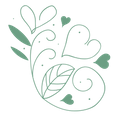Why Join a Forest Therapy Session?
Forest therapy is a practice of slowing down. It invites us to go into nature, notice our senses, our surroundings, and our place as a moving, breathing part of the natural world.
When people first hear about the idea of forest therapy, they often have an intuitive sense of some of the ways this practice could be beneficial; since we were young, many of us have heard that fresh air is good for us! When we have felt overwhelmed by stressful situations, loved ones might have suggested we go for a walk to help shake it off and gain some new perspective. That part makes sense.
So if the idea of forest therapy is so intuitive and natural, why join a guided session, instead of just going for a simple walk outside on your own?
Well, going for a walk outside on your own is definitely a good idea. However, there are also some stand-out benefits to joining a guided session! Let me tell you all about it.
1. Time to unplug
One of the biggest differences from walking on your own is that with a guide, you have a real opportunity to leave the electronic world behind. Many of us, myself included, are so accustomed to the go-go-go pace of our full and often busy lives, that any lull in activity seems to scream at us to be filled with something... But in forest therapy, you are encouraged to embrace the lulls. Instead of flicking on the screen of your cell phone to read social media notifications, check your email, or find out what weather is coming next, during a forest therapy session you will be encouraged to stow those electronics in a deep pocket of your backpack where their electric buzz can no longer call for your attention. Let your guide keep the time. Put your trust in the idea that now you are just here, doing this forest therapy thing. Find out what it feels like to be still. To have nothing to do, but to look around. To listen. To embrace your senses.
2. Slow down
Another great reason to join a guided forest therapy session is that the guide can set your pace. Just like a race pace bunny, the guide will make sure to keep you on track. The big difference is of course that forest therapy isn't about getting to the finish line in a certain amount of time. Instead, you'll be encouraged to move slowly. Slowing down can be difficult at first, more difficult for some than for others. But generally, a guide will help bring you to a much slower pace than you are used to. In slowness there comes space to notice your self and your surroundings in a new way.
3. Connect with nature in a new way
Throughout your session, the guide will offer you a number of therapeutic 'invitations'. These invitations are often centered around bringing attention to one or more of our senses, similar to what you might experience in a guided meditation. You might be invited to notice, listen, play, create, imagine, or spend some time getting to know the beings who call the forest home. Sometimes your guide will pick up on the nuances of the weather or the wildlife and be called to co-create new invitations on the spot! A skilled guide can craft these invitations in a way that makes them accessible to all.
4. Be heard
One aspect of forest therapy that often surprises people is that there are many opportunities to share your experiences with the group. Of course, there is no pressure to share anything in particular, or even to speak at all, but the option can be a welcomed complement to periods of quiet time spent on the trail. We often follow a tradition of council in which the participants form a circle and speak to the center one at a time. A talking piece is typically passed around to signal the speaker who is invited to speak from the heart, while the rest of the circle listens.
5. Take it all in
Forest therapy sessions usually end with tea; a wild-foraged, local, herbal tea, to be exact! This is an opportunity to learn a little bit more about one or two of the plants that live in the landscape you've been exploring during your session. Warm up. Enjoy the scent of the tea and the feel of the steam on your face. Maybe take a sip, or two, or three.
It is important to remember that forest therapy guides are not generally therapists. They do not prescribe medicine, or dictate rules. Guides hold space. They listen openly. They offer ideas of how you might explore your own unique journey. Guides are trained and practiced in what they offer. And just as you have skills to share in your area of expertise, so too does your guide.
There is a lot more information out there about the physical, mental, and social benefits to spending time in nature. But that will be another blog post!
What questions do you have about forest therapy? I would love to hear from you - leave a comment below!


